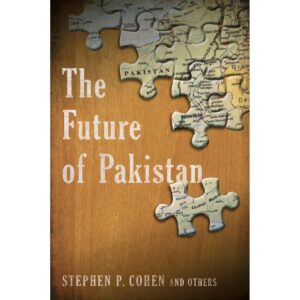
Future of Pakistan By Stephen P Cohen
![]()
Title: Future of Pakistan
Author: Stephen P Cohen
Pages: 333
Subject: Pakistan Affairs
Future of Pakistan By Stephen P Cohen
How to Order Online ? Call/SMS 03336042057 – 0726540141
![GAT General By Ch. Ahmed Najib [Caravan]](https://csspoint.com/wp-content/uploads/2018/10/GAT-General-By-Ch.-Ahmed-Najib-Caravan-300x300.jpg)
GAT General By Ch. Ahmed Najib Caravan
Title: GAT General
Author: Ch. Ahmed Najib
Pages: 552
Publisher: Caravan
Subject:
HOW TO BUY ONLINE ? CALL/SMS 03336042057
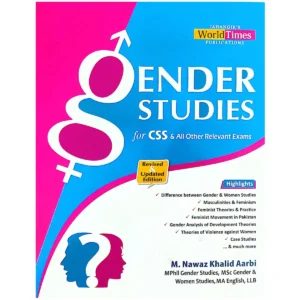
Gender Studies By M.Nawaz Khalid JWT
Gender Studies By M.Nawaz Khalid JWT. Gender Studies as a subject was introduced in Pakistan in 1990s. Since then, it is being taught at many universities of the country with different names, like Women Studies, Gender Studies, Gender and Women Studies – with almost the same undercurrents.
Title: Gender Studies
Author: M. Nawaz Khalid
Publisher: Jahangir World Times
Pages: 415
Subject: CSS/PMS Gender Studies
How to Order Online? Call/SMS 03336042057 – 0726540141

Gender Studies By Samraiz Hafeez JWT
Title: Gender Studies
Author: Samraiz Hafeez, Waheed Khan & Humaira Tehsin
Pages: 208
Publisher: Jahangir Publication
Subject: Gender Studies
HOW TO BUY ONLINE ? CALL/SMS 03336042057

Gender Studies By Sujata Sen
Title: Gender Studies
Author: Sujata Sen
Pages: 222
Subject: Gender Studies
HOW TO BUY ONLINE ? CALL/SMS 03336042057
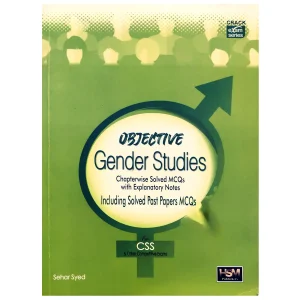
Gender Studies MCQs By Sehar Syed HSM
Title: Gender Studies MCQs
Author: Aamer Shahzad & Sehar Syed
Publisher: HSM
Edition: Latest and Updated
Pages: 208
Subject: Gender Studies
HOW TO BUY ONLINE ? CALL US AT 0726540316 OR CALL/SMS 03336042057
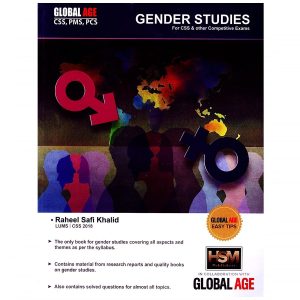
Gender Studies Raheel Safi Khalid Global Age HSM
Gender Studies Raheel Safi Khalid Global Age HSM
Title: Gender Studies
Author: Raheel Safi Khalid
Pages:
Publisher: HSM
Subject: Gender Studies
How to Order Online? WhatsApp Now 03336042057

General Agriculture 10th Edition By Dr Muhammad Akhtar Abbas
General Agriculture 10th Edition By Dr Muhammad Akhtar Abbas. General Agriculture is an exhaustive study in the field of agriculture. The book primarily focuses on the course outline of CSS and PMS examinations. In addition, the book will be of much significance to general readers, policy-makers, students of all the disciplines of agriculture and Botany and the candidates appearing for the test interviews of various agricultural services
Title: General Agriculture
Author: Dr. Muhammad Akhtar Abbas
Edition: Tenth
Pages: 599
Publisher: AH Publishers
Subject: Agriculture & Forestry
How to Order Online ? Call/SMS 03336042057 – 0726540141

General Mathematics Ability CSS,PMS By Asad Aziz JWT
Title: General Mathematics Ability CSS,PMS
Author: Asad Aziz
Pages: 295
Publisher: JWT Publication
Subject: Mathematics
HOW TO BUY ONLINE ? CALL/SMS 0726540141, 03336042057

General Science & Ability MCQs By Aamer Shahzad HSM
Title: General Science & Ability MCQs
Author: Aamer Shahzad
Pages: 272
Publisher: HSM
Subject: General Science & Ability
HOW TO BUY ONLINE ? CALL US AT 0726540141 OR CALL/SMS 03336042057
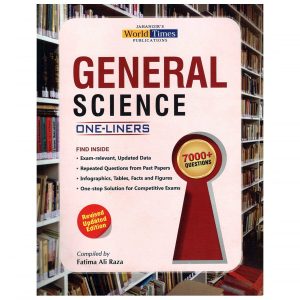
General Science One Liners By Fatima Ali Raza JWT
General Science One Liners By Fatima Ali Raza JWT
Title: General Science One Liners
Authors: Fatima Ali Raza
Publisher: JWT
Pages: 215
Subject: General Science
How to Buy Online ? Call/SMS 03336042057 – 0726540141

Geography MCQS By Imran Bashir JWT
Title: Geography MCQS
Author: Imran Bashir
Publisher: Jahangir World Times
Pages: 136
Revised and Updated
Subject: CSS/PMS Geography
HOW TO ORDER ONLINE ? OR CALL/SMS 03336042057 / 0726540141
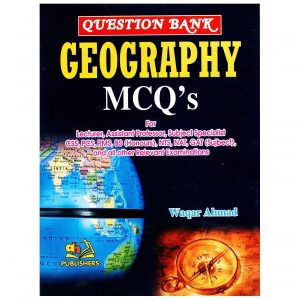
Geography MCQs By Waqar Ahmad AH Publishers
Title: Geography MCQ’S
Author: Waqar Ahmad
Pages: 191
Publisher: AH Publishers
Subject: Geography
HOW TO BUY ONLINE ? CALL/SMS 03336042057
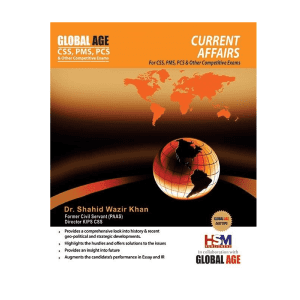

Global Age Environmental Science By Maryum Zafar and Iqra Saleem HSM
Title: Environmental Science
Author: Maryum Zafar & Iqra Saleem
Publisher: HSM Publishers
Pages: 293
Edition: Latest & Updated
Subject: CSS Environmental Science
How to Order Online? Call or WhatsApp +92 333 6042057
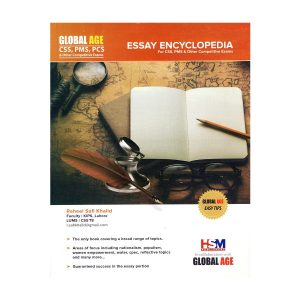

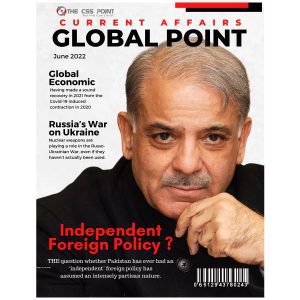
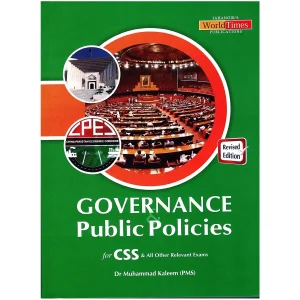
Governance and Public Policies By Muhammad Kaleem (PMS) JWT
Title: Governance & Public Polices
Author: Muhammad Kaleem (PMS)
Publisher: Jahangir World Times
Pages: 376
Subject: CSS – Governance & Public Polices
ISBN: 9789696640134
HOW TO ORDER ONLINE ? CALL US AT 0726540316 OR CALL/SMS 03336042057
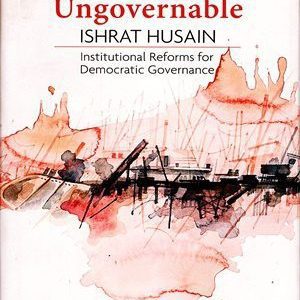
Governing the Ungovernable By Ishrat Husain Oxford
Title: Governing the Ungovernable
Author: Ishrat Husain
Pages: 550
Publisher: Oxford Publication
Subject: Pakistan Affairs
Governing the Ungovernable By Ishrat Husain Oxford
How to Order Online ? Call/SMS 03336042057 – 0726540141
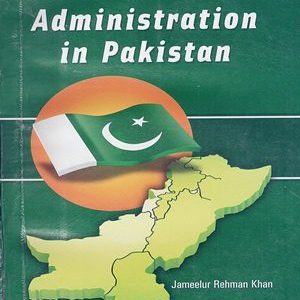
Government And Administration in Pakistan By Jameel ur Rehman Khan
Title: Government And Administration in Pakistan
Author: Jameelur Rehman Khan
Pages: 876
Publisher: peace Publications
Subject: Pakistan Affairs
HOW TO BUY ONLINE ? CALL/SMS 03336042057

High Scoring English Essays By M Abrahim Shah Dogar Brothers
Title: High Scoring English Essays
Author: M Abrahim Shah
Publisher : Dogar Brothers
Pages: 127
Subject : Essay
High Scoring English Essays By M Abrahim Shah Dogar Brothers
HOW TO ORDER THIS BOOK ? PLEASE CALL US AT 0726540141 OR CALL/SMS 03336042057
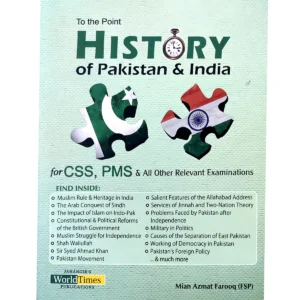
History of India and Pakistan Mian Azmat Farooq JWT
History of India and Pakistan Mian Azmat Farooq JWT
Title: History of India & Pakistan
Author: By Mian Azmat Farooq (FSP)
Publisher: Jahangir WorldTimes
Pages: 456
Edition: Revised & Updated
Subject: CSS/PMS History of India & Pakistan
How to Order Online? WhatsApp 03336042057

History of Modern Europe 1789 – 2013 By BV Rao
History of Modern Europe 1789 – 2013 By BV Rao
Title: History of Modern Europe 1789 – 2013
Author: BV Rao
Edition: Fifth
Pages: 563
Subject: CSS / PMS European History
How to Order Online ? Call/SMS 03336042057 – 0726540141

History of The Arabs By Philip K Hatti
Title: History of The Arabs
Author: Philip K Hatti
Pages: 789
Recommended: FPSC
Subject: CSS/PMS Islamic History & Culture
Note: This is a printed version of original Book
HOW TO BUY ONLINE ? CALL US AT 0726540316 OR CALL/SMS 03336042057

History of The United States of America By Majumdar
Title: History of The United States of America
Author: R.K Majumdar
Pages: 403
Edition: Fifth
Subject: History of The United States if America
HOW TO BUY ONLINE ? CALL US AT 0726540316 OR CALL/SMS 03336042057

History of USA By Ikram Rabbani JWT
Title: History of USA
Author: M. Ikram Rabbani
Pages: 319
Publisher: JWT Publication
Subject: History of USA
HOW TO BUY ONLINE ? CALL/SMS 0726540141, 03336042057
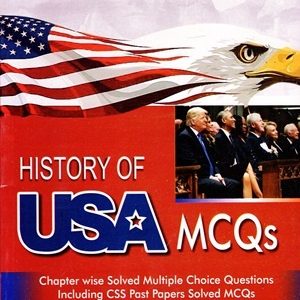
History of USA MCQs By Aamer Shahzad HSM
Title: History of USA MCQs
Author: Aamer Shahzad
Publisher: HSM Publisher
Pages: 260
Subject: CSS/PMS History of USA
HOW TO ORDER ONLINE ? CALL 0726540316 OR CALL/SMS 03336042057

History of USA MCQs By Umair Khan JWT
Title: History of USA
Author: Umair Khan
Publisher: Jahangir World Times
Pages: 152
Subject: CSS/PMS History of USA



